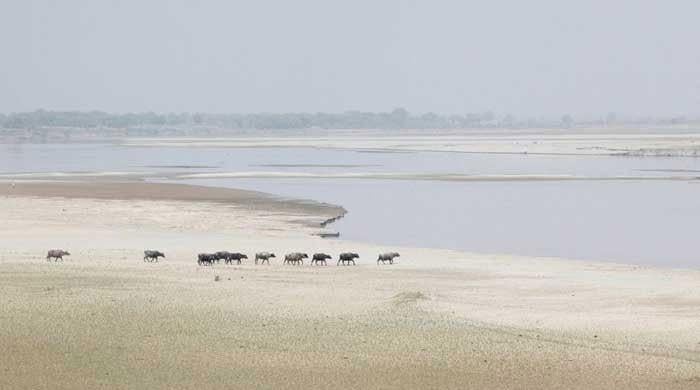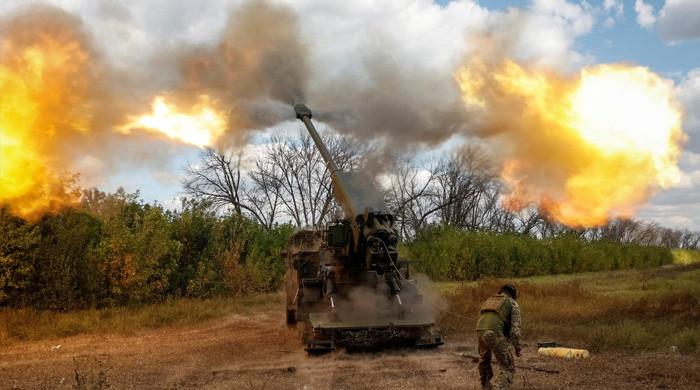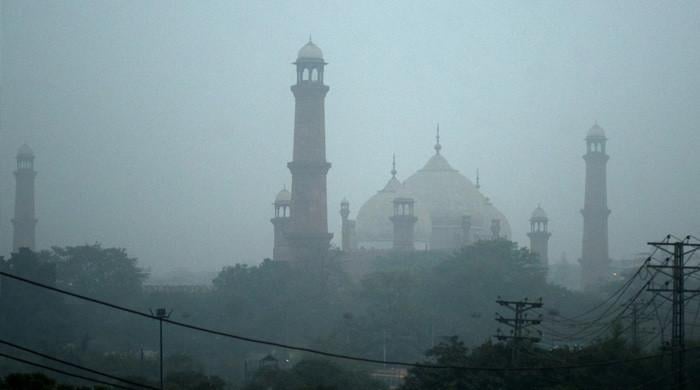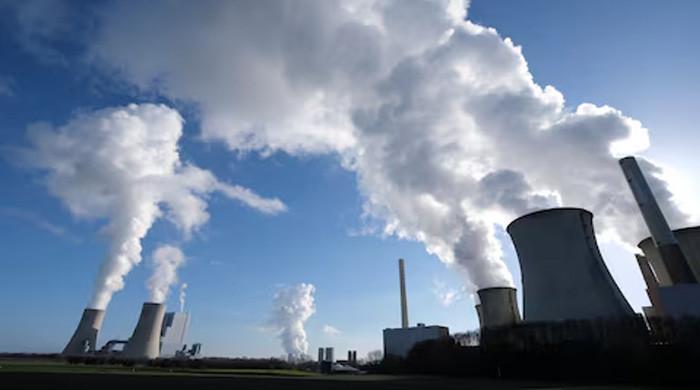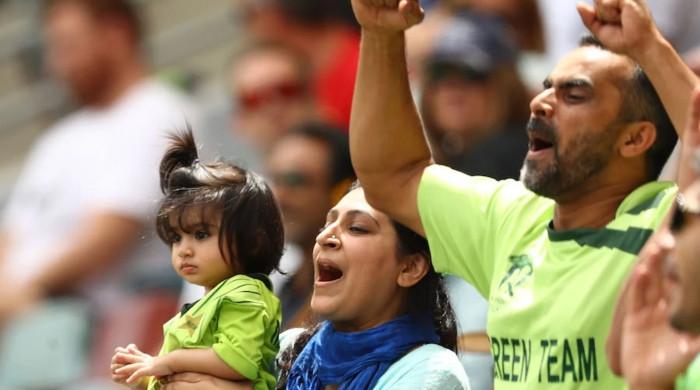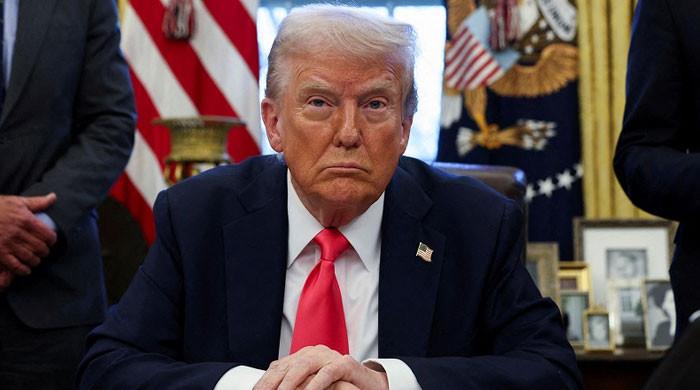How political 'divide' helped PPP multiply in Sindh
So, unless any political party or parties really worked hard in rural Sindh, PPP’s position would remain intact
November 13, 2023
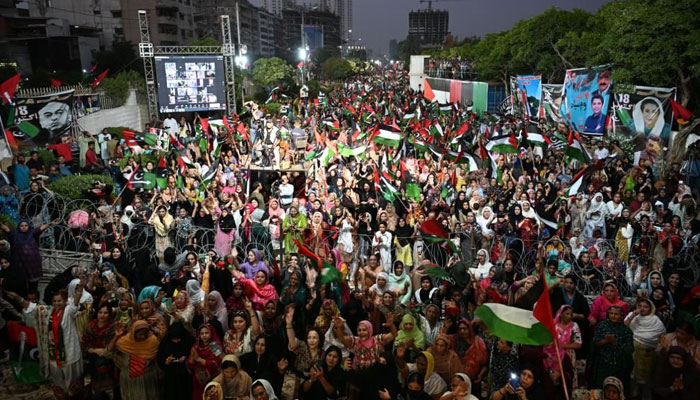
Pakistan Peoples’ Party (PPP) from its birth in Lahore, on November 30, 1967, till the last general elections held in 2018 kept its position intact at least in Sindh Province and never faced any serious political challenge but practically wiped out from its birthplace Punjab and could not recover since 2013.
In the forthcoming elections, PPP is most likely to retain its position in rural Sindh as it hardly has any serious challenge but due to the political vacuum created in urban Sindh after the fall of Muttahida Qaumi Movement (MQM) on August 22, 2016, the fiasco by its founder Altaf Hussain and the uncertain political fate of Pakistan Tehreek-e-Insaf (PTI) after May 9 disaster, PPP leadership is confident of winning more seats in urban Sindh cities like Karachi, Hyderabad, Mirpurkhas, and Sukkur too.
One of the reasons why PPP traditionally retained its position despite the highly questionable performance of governance in Sindh over the years has been the lack of credibility and weakness of anti-PPP forces as both collectively and as parties they have hardly worked in the Province beyond a few cities whether it is Pakistan Muslim League-Nawaz (PML-N), Pakistan Tehreek-e-Insaf (PTI), Jamat-e-Islami (JI), or Grand Democratic Alliance (GDA). The only party which has come up in certain constituencies is Jamiat Ulema-e-Islam-Fazal (JUI-F).
Formed by former Prime Minister Zulfiqar Ali Bhutto, many veteran politicians here challenged the might of the PPP but never succeeded. Why PPP never faced a serious political challenge remains a long-standing million-dollar question.
Bhutto in the 70s took West Pakistan by storm and within three years after forming PPP, he swept both Punjab and Sindh. Punjab and Sindh’s strong feudal families could hardly challenge him as though he himself was a big feudal but his style of politics attracted downtrodden, peasants and working class. In Sindh, GM Syed, the founder of the Jeay Sindh Qaumi Mahaz (JSQM), challenged Bhutto and termed him a representative of Punjab but his narrative couldn't fly.
In urban Sindh, Bhutto’s challengers were two main religious parties — JI and Jamiat Ulema-e-Pakistan (JUP) — but their strength was confined to Karachi and Hyderabad.
Bhutto also emerged as a popular leader of urban Sindh in the 1970 elections and PPP won two NA and eight MPA seats from Karachi but some of its policies during his government led to ethnic divide particularly the way JI and JUP exploited the Sindh Language Bill and quota system in admissions and jobs.
However, the pro-Bhutto segment believed that he succeeded in attracting the youth of rural Sindh at that time as they started getting both admissions in urban centres as well as jobs and this policy politically hurt GM Syed’s narrative.
Therefore, when Martial Law was imposed on July 5th, 1977, Syed provided silent support to Gen Zia ul Haq, and even in the post-Bhutto’s hanging Syed opposed the MRD movement and called it Punjab-centric and did not join it.
General Zia made several attempts to disband the PPP and directly or indirectly used many leaders within the PPP to take over the party but failed. From late Mumtaz Ali Bhutto to the late Abdul Hafeez Pirzada, and late Ghulam Mustafa Jatoi but for the PPP supporters the two Bhutto ladies Begum Nusrat Bhutto and Benazir Bhutto were the ultimate leaders who led from the front. Such attempts were also failed in Punjab.
However, during the 1983, Movement for the Restoration of Democracy (MRD) — one leader and one party — emerged strongly in Sindh. It was that of Rasul Bux Paleejo and Awami Tehreek. When Paleejo was declared by Amnesty International as ‘Prisoner of Conscience,’ he enjoyed getting attention in Punjab and other Provinces as well. He also had oratory skills and political depth as well as an organised party, from women to peasants. However, Paleejo could not utilise his skills at the centre and his politics was confined to Sindh, targeting MQM, which in the larger context hardly caused a dent in the PPP as the latter too criticised the MQM politics.
Thus, Gen Zia’s 11-year rule from the execution of Bhutto to the militarily crushed MRD movement and other attempts actually helped the PPP to consolidate its position as well as politics. Even his last desperate attempt to bring in a Sindhi politician, Mohammad Khan Junejo, in 1985 didn’t help. Finally, when Benazir Bhutto returned on April 10, 1986, the ‘writing was on the wall’ — PPP’s popularity graph was at an all-time high. All of Zia’s policies failed to marginalise Bhutto’s popular myth and all his politics turned counterproductive.
PPP’s strongest rivals which emerged in Sindh in the 80s were Urdu-speaking ‘Mujahirs’, particularly in the backdrop of the ‘quota system'. Irrespective of its ethnic dynamics, the rise of the then Muhajir Qaumi Movement (MQM), led by its founder Altaf Hussain swept the entire urban Sindh from Karachi to Sukkur, Hyderabad, Mirpurkhas. So, electorally MQM countered PPP, which no other party in Sindh has been able to. But, the price was too heavy as the province was plunged into one of the worst violent politics. Again politically it didn’t damage PPP and they further consolidated their position in rural Sindh and used the ‘Sindh card.’
MQM led by Altaf Hussain within no time emerged as the sole representatives of Urban Sindh and both PPP and PML (N) needed its support particularly during any vote of no confidence or in the formation of the government. So, if the purpose of launching MQM was to bring ‘balance’ between urban and rural Sindh or to counter PPP, it didn’t work out and as a result, the party not only faced four operations but August 22, 2016, turned out to be the last nail in its political coffin.
Three out of four operations against MQM were launched when Nawaz Sharif was the Prime Minister, the last one was in 2014. The political vacuum which was created by Altaf Hussain’s MQM and due to back-to-back divisions within MQM helped PTI, which in 2018 swept Karachi, by getting 14 out of 20 seats amid allegations that at least 10 to 11 seats to PTI were given allegedly through ‘political engineering’.
On August 22, 2016, MQM suffered the most fatal blow, dealt by none other than its founder but the way the establishment reacted after he raised the anti-Pakistan slogan it was clear that they were waiting for this moment. Within no time MQM offices at all levels were sealed and so was MQM's fate. This again helped the PPP politically in rural Sindh and now they are also aiming to gain the same in urban Sindh.
Post-2016 ‘Project MQM (Pakistan)’ with a new look at a new centre could have been succeeded had in 2018, MQM seats would not have allegedly ‘hijacked.’ MQM, now finding it hard to boost back to a position of 2013 as PTI in the last 16 months had gained a lot politically till May 9th.
For PTI May 9 is like what August 22 is for MQM, but, in both cases, the party whose position remains intact is PPP, while PML-N in the past 16 months has lost considerable ground in Punjab.
So, unless any political party or parties really worked hard in rural Sindh, PPP’s position would remain intact and like in the past any anti-PPP alliances hardly caused a serious dent in the party's popularity base. In the last few years, thousands of youth have joined mainstream politics and this aspect has not been addressed as yet by any party so far as to who these voters would finally side with.
The writer is an analyst and columnist for GEO, The News and Jang. He posts @MazharAbbasGEO.




